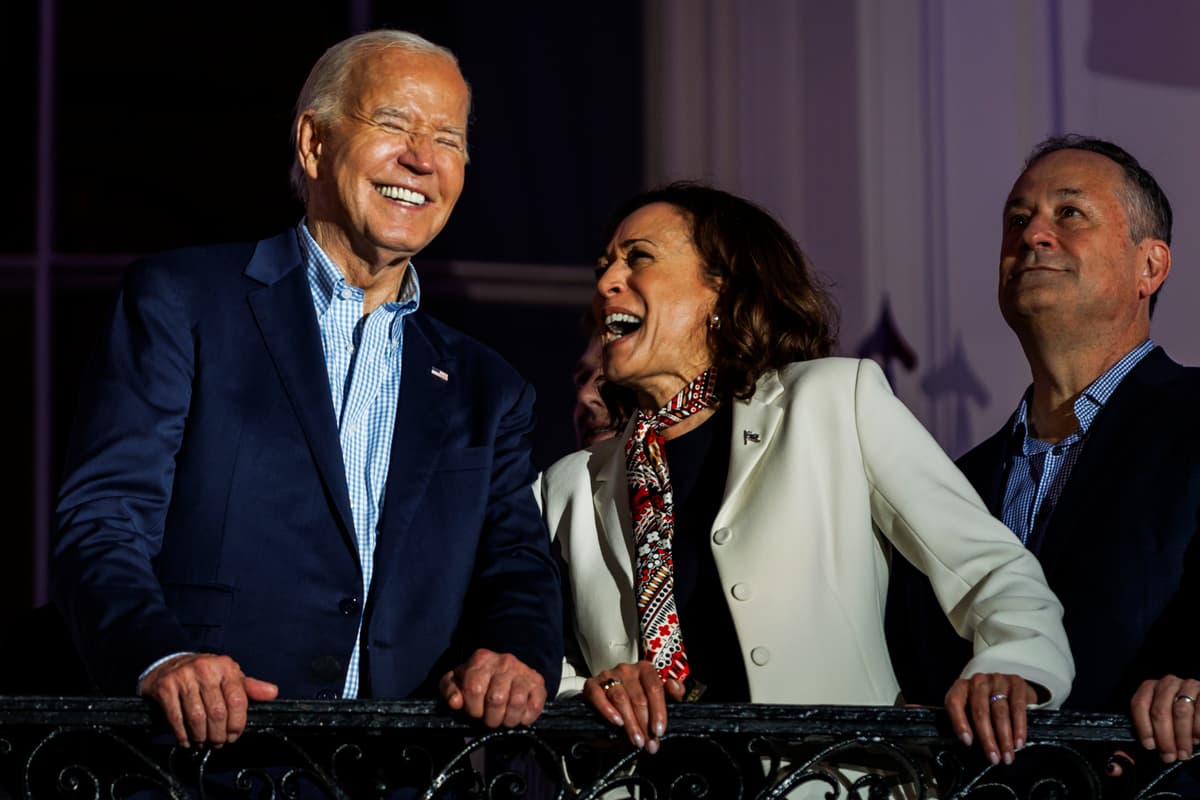Biden-Harris: The Legacy of Inflation
On their watch the value of the dollar has collapsed to record lows, and despite inflation cooling, prices are not coming down to where they were under President Trump.

Today’s inflation numbers will underscore why Americans are so frustrated by the spiral of price increases under the Biden-Harris administration. Even as the pace of inflation slows, prices aren’t going back down. Prices are stuck at an elevated level — up some 20 percent since President Biden took office. These higher prices for groceries and other household expenses can’t so easily be waved off as “price gouging,” as Vice President Harris insists.
Call it the Biden-Harris legacy. There is a “widespread malaise” felt by Americans over inflated prices, the Wall Street Journal has reported. Today’s numbers from the Fed’s preferred inflation gauge, the personal consumption expenditures price index, show why. In July prices rose but 0.2 percent from June. Yet the index rose 2.5 percent over last year, some 25 percent higher than the Fed’s target. The index is running some 18 percent higher than it did in 2020.
That’s just an average, though. Staples like eggs and sugar cost 40 percent more than they did in 2020, Pew Research says. Peanut butter costs 49 percent more. Bread is up 46 percent. Roast beef — a hallmark of middle-class prosperity — costs 44 percent more. Car insurance and repair costs are up by 47 percent. So even if prices for the moment are rising more slowly, it’s the cumulative impact of the Biden-Harris inflation wave that is dismaying Americans.
The high-spending, high-taxing, high-regulating policies of Mr. Biden, abetted by Ms. Harris, especially with her record-breaking use of the vice-presidential tie-breaking vote, are prime movers behind this persistent inflation. Yet prices aren’t moving down as Americans would like. The reason is that the root of the problem lies with the nature of our money — the fiat currency regime that has severed ties with the monetary basis of real value, gold.
It’s no coincidence, after all, that as prices have surged to new highs, the dollar, as measured in gold, has plummeted to new lows. The dollar was valued at a 35th of an ounce of gold as late as in 1971, when the last vestige of sound money was abandoned. Now it fetches less than a 2,500th of an ounce of the monetary metal. Blame the severing of the dollar’s historic link to gold for the fact that prices inexorably ratchet up without ever going back down.
That’s the difference between today’s fiat currency regime and the historic gold standard, the monetary maven James Grant reminds the Sun. Under the gold standard, prices ratcheted up in times of war — but ratcheted down in the subsequent peace. Over time, the average of prices didn’t ratchet at all but remained admirably stable. What anchored them in place — and incidentally stood guard over the public credit — was a dollar defined as a fixed weight of gold. You couldn’t just print it.
In its heyday between 1879 and 1913, the gold standard in America held inflation to but 0.1 percent a year — on average, economist Michael Bordo has noted. A gold standard, Mr. Bordo explains, “ensures through the operation of the competitive market a tendency toward long-run price stability.” With fiat money, even if the inflation rate abates, prices never fall back to where they were before the inflation began.
So it is that when Americans “go food shopping,” Axios reports, “they feel the sting of higher prices,” making the grocery store “the place where consumers are most regularly reminded about inflation.” Asked about this “crisis of affordability” last night on CNN, Ms. Harris squirmed, blaming it on the pandemic and the notion that, in one of the most competitive — and lowest-margin — industries in America, grocers were “gouging” their prices.
Malarkey. The veep’s answer, price controls, would lead not to lower costs, but to fewer products and, soon, higher prices. Her plan on affordable housing — caps on rent — would mean fewer apartments, her caps on drug prices less innovation and fewer new cures. Ms. Harris says she wants to “turn the page” from the Biden administration and its legacy of high prices. That’ll be impossible if she pursues the policies that caused the inflation to begin with.

